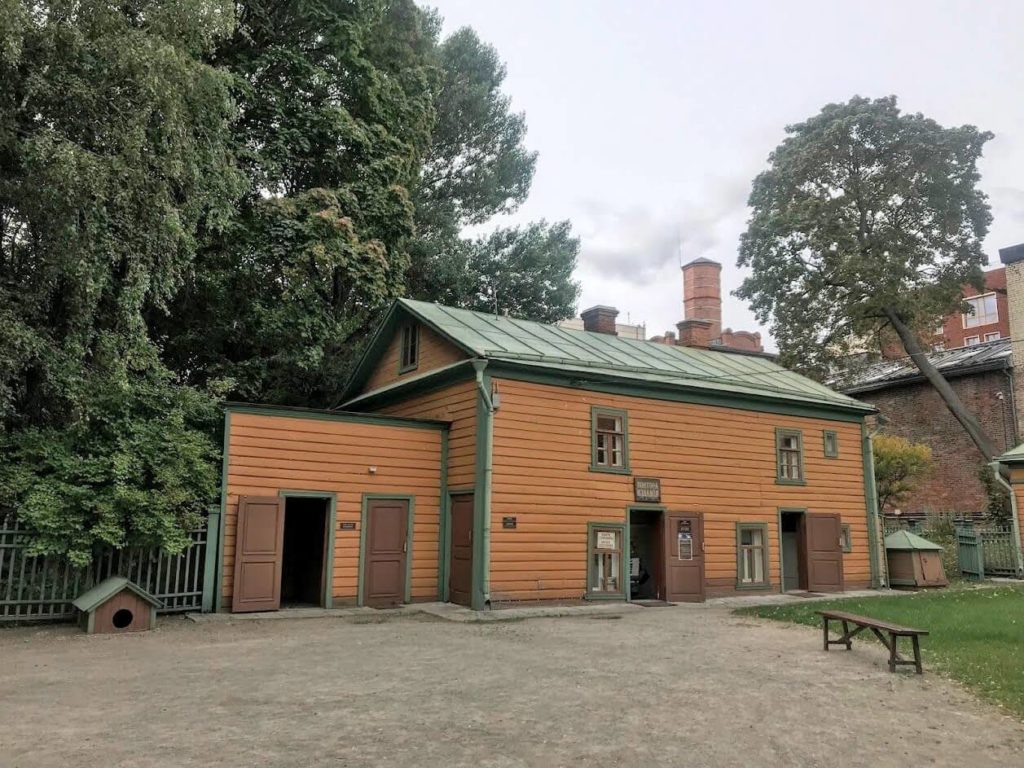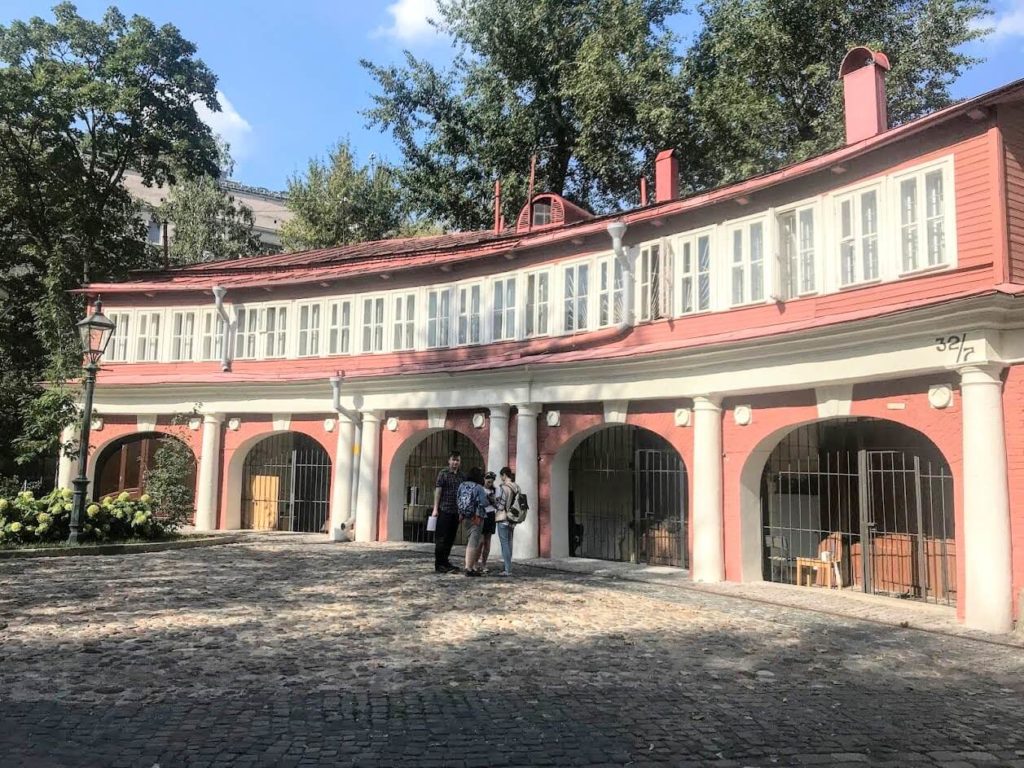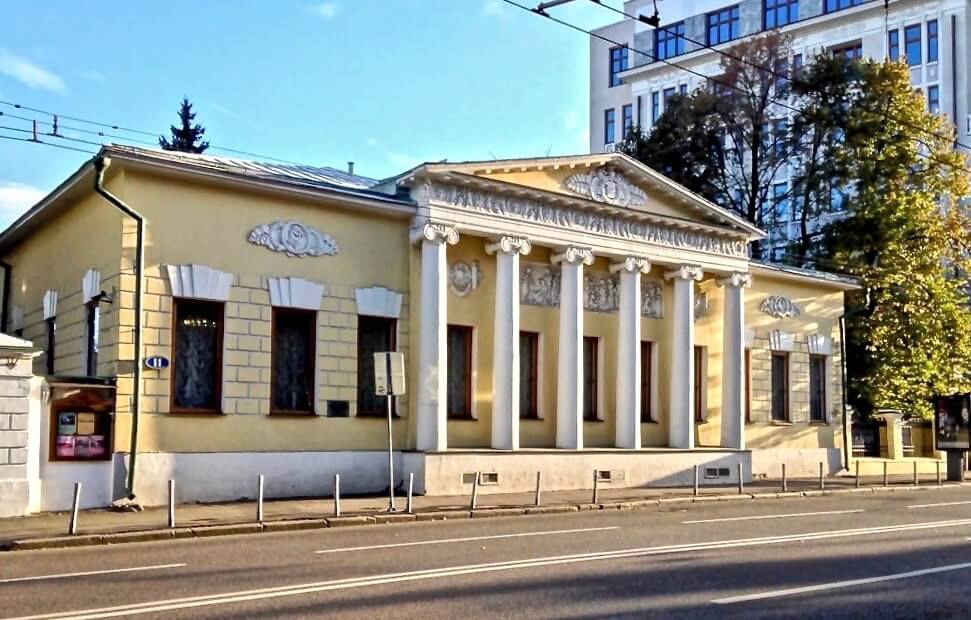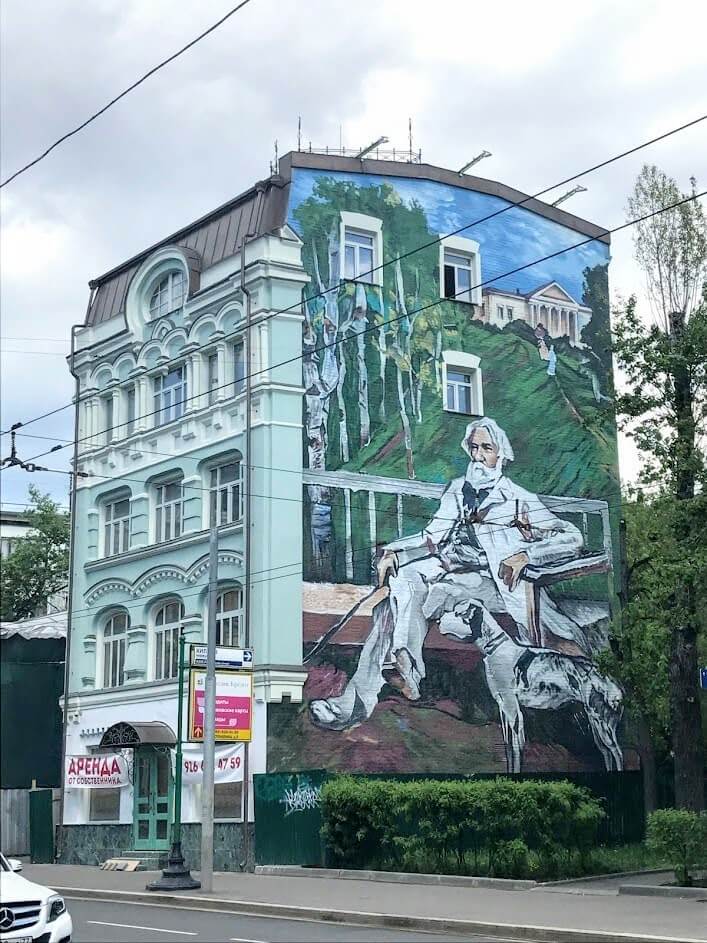Leo Tolstoy is one of the greatest writers in the world. And both in his life and work, he had a special connection with the Russian capital – Moscow. He conveys the city’s atmosphere and its soul in his novels. This is where his characters live, create, fall in love, dance at the balls and fight on duels. Moreover, the city itself becomes a character in his works. There are still many places linked to Leo Tolstoy in Moscow. Read about them in this Tolstoy Guide through Moscow.
Places linked to Leo Tolstoy in Moscow
This is a guest blog post written by Alexandra and Karina, local Russian art and history experts. You can read more of their stories and check out some beautiful art tours they are organising on a link here.
Do you love Leo Tolstoy’s books and would like to look for some of the places linked to Leo Tolstoy in Moscow?
It’s actually quite easy to take a walk in the footsteps of Leo Tolstoy in Moscow. Most of the locations where Tolstoy and his family lived in Moscow, the boarding school where his children studied and the current Literary Museum of Tolstoy are very conveniently located in the picturesque Khamovniki District.
Here are just some of the places linked to Leo Tolstoy in Moscow you can visit.
TIP: Click here for the Tolstoy in Moscow map with all of these locations.
Leo Tolstoy as a young boy in Moscow
⤷ STOP 1: House where Tolstoy stayed as a young boy / Address: 11/6 Plyushikha Street
Leo Tolstoy first visited Moscow in 1837 when he was a nine years old boy. He and his family stayed in the one-storey mansion of lieutenant colonel Shcherbachev in Khamovniki neighbourhood.
The building still stands there, and it houses the local transport police station. Although, it got a rather strange outlook during the recent renovation works.
Young Tolstoy was deeply impressed by the big city. And particularly by the Kremlin.
Moscow at that time was a large construction site. Many buildings were being rebuilt after the Great Fire in the War with Napoleon (1812). Before that time, the majority of the houses were built of the wood. So, the city was getting a completely new appearance.
Tolstoy described his impressions from Moscow of that time and the life of the Moscow nobility in his novel Childhood.
As Tolstoy grew older, he would often get tired of the busy life in Moscow. But, he would bear his childhood fascination with this city throughout his entire life.
Wooden buildings in Moscow from Tolstoy’s time
While looking for places linked to Leo Tolstoy in Moscow, take a closer look at the old buildings and try to guess what they were actually made of.
Many buildings you’ll see during this Tolstoy walk in Moscow are actually wooden. Although not many people know that. They are covered with a thick layer of stucco moulding and painted yellow to resemble stone buildings.
That trick has been used for a great number of buildings in Moscow. Wooden structures were less expensive to produce. And since the money for the construction was primarily drawn to Saint Petersburg, at that time the capital of the Russian Empire, that was a popular solution for many house owners.
⤷ Read my guide to Saint Petersburg on a link here
Leo Tolstoy in Khamovniki neighbourhood of Moscow
⤷ STOP 2: House where Tolstoy lived / Address: 34 Sivtsev Vrazhek Street
After his parents died, Tolstoy and his siblings lived in Kazan with their aunt during the 1840s. He even entered the university there. But, never graduated because in 1850 he returned to Moscow.
When Tolstoy turned 22, he rented a five-room apartment, which was at that time considered to be quite modest and small. Especially for the nobility. It was located at Sivtsev Vrazhek Lane, also in Khamovniki neighbourhood.
This house is a place where Tolstoy lived for around a year. More importantly, this is where he started to write his first literary work.
At that time, he led an indulgent lifestyle typical for young noblemen who loved to gamble and often participated in loud feasts.
Tolstoy went into so much debt during that year in Moscow that in 1851 he joins the military service in the Caucasus to pay off his debts.
TIP: This address is also mentioned in War and Peace. He accommodates here his character Nikolai Rostov, also in a small apartment. As described in his novel, the house was wooden, covered with layers of stucco moulding. Sounds familiar?
Tolstoy’s Returns To Moscow
After he participated in several military campaigns during the Crimean War, in 1856 Leo Tolstoy retires from the military service.
He wrote his Sevastopol Sketches during that time which gained him great popularity. So, when he moved to St. Petersburg after the war, he was welcomed as a famous writer.
After a brief time in Saint Petersburg, Tolstoy embarks on his first journey to Europe. He wasn’t impressed with what he saw both in St. Petersburg and Europe. And, in 1857 he decides to return to Moscow. Tolstoy rented a house from the merchant’s family Vargin in Zamoskvorechye neighbourhood.
It’s an ancient Moscow’s district located on the other bank of the Moskva River. Opposite to Kremlin and a short walking distance from it.
During the time of Tolstoy, and until the revolution, it was a neighbourhood of merchants, and it still regains its old-fashioned atmosphere.
TIP: Would you like to learn more about Zamoskvorechye neighbourhood during your visit to Moscow? Check out the walking tour here.
⤷ Read more about the Hermitage Museum in Saint Petersburg
The Vargin House
⤷ STOP 3: Tolstoy’s Literary Museum / Address: 12 Piatnickaya Street
In Vargin’s House in Moscow, Tolstoy lived with his brother, sister and her children. He continued to work on his novel The Cossacks while there. He tried to finish it as fastest as he could, to cover his debts.
It’s not clear in which Vargin’s house they lived exactly. However, the only surviving building of Vargins is now the branch of the Tolstoy’s Literary Museum. If you’d like to learn more about Leo Tolstoy in Moscow, be sure to visit it. It has many interesting events all year round. Take some rest in its charming courtyard with a beautiful garden before continuing your walk!
TIP: Piatnickaya street is a historical gem itself. And be sure to visit it during your search for places linked to Leo Tolstoy in Moscow. It’s where the headquarters of many Russian merchants were. Nowadays, it’s a lively street with many bars and cafes. A very special place is the Esse Café, especially for all jazz music lovers. Something is going on each night, and the best city musicians are playing there.
Leo Tolstoy’s life in Moscow as a family man
⤷ STOP 4: Tolstoy’s house – Memorial Museum of Leo Tolstoy / Address: 21 Leo Tolstoy Street
Between the 1860s and 1880s, Leo Tolstoy left Moscow again to travel around Europe. He got married in 1862 with his wife, Sophia. He lived with his wife and children in his countryside estate of Yasnaya Polyana.
As the children got bigger, Tolstoy decided to go back to Moscow to provide them with the boarding school education. In 1882 he bought a wooden house with a large garden in Khamovniki neighbourhood. It becomes their family home for the next twenty years.
A charming wooden house in Khamovniki is definitely the most interesting place linked to Leo Tolstoy in Moscow. As soon as he bought it, he renovated and enlarged it to accommodate his big family.
The house is now the Memorial Museum of Leo Tolstoy, highly recommended to visit for everyone while in Moscow. The beautiful estate with its carved wooden fence seems to belong to another epoch that does not exist anymore. Visiting it is like travelling back in time.
You will see the original furniture and things that surrounded the Tolstoy’s family in their everyday life. From the boots that Tolstoy carved for his friends, the bike that he mounted when he was sixty, his writing table and a chair with cut legs.
The whole estate is well preserved, including its magnificent garden with linden trees. The street was renamed into Leo Tolstoy Street, and it still goes under the same name now.
Leo Tolstoy Street in Moscow
Leo Tolstoy street is a beautiful area filled with attractions. Next to Leo Tolstoy House, you will see red brick buildings belonging to the former textile factory. Today, Yandex, the most successful Russian Internet venture, has its headquarters there.
A bit further is the 16th-century chamber of Textile Settlement. In fact, Khamovniki is the ancient Russian word for textile workers, hence the name of the neighbourhood.
Impressive St. Nicholas Church built in the 16th century, famous for its bright Moscow-style façade, is situated at the end of the street. It has miraculously survived the Soviet Epoch, and it is free to visit, so don’t be shy to get inside!
TIP: The ladies should cover their heads when visiting Russian orthodox churches. In essence, the shawls are available at the entrance in case you don’t have them with you.
Tolstoy’s Sights on Prechistenka Street
⤷ STOP 5: Polivanov School / Address: Prechistenka 32
Sons of Leo Tolstoy went to the Polivanov School, one of the best private schools for boys in Moscow before the revolution. It’s located some twenty minutes walk away from the Tolstoy’s House.
A music school is located in it today. Be sure to get inside its courtyard. It’s one of the most atmospheric gardens in Moscow. Here you can hear the sound of music while admiring numerous flowers (from May to October), planted by the locals, and cats.
On the initiative of the local residents, the yard has recently been covered with different types of pre-revolutionary pavements. Looking at it you can imagine how Moscow streets looked like before asphalt was invented.
⤷ STOP 6: Literary Museum of Leo Tolstoy / Address: Prechistenka 11
Next location linked to the life of Leo Tolstoy in Moscow is the Literary Museum of Leo Tolstoy. It is situated in the former aristocratic manor house, built in 1812.
It has a very high basement and first floors on the front façade and several lower levels on wing sides. In Moscow of that time, residents should pay a tax on extra floors on front facades. Therefore, many buildings were cunningly constructed in such a way that they would have only one main storey in front.
This manor house has nothing to do with Leo Tolstoy. He hasn’t visited it at all during his lifetime. It was given to the newly created Tolstoy’s Museum by the Soviets in the 1920s.
Now it is the central building of the museum, where Tolstoy’s manuscripts are stored. In the courtyard of the museum, you can see the monument to Tolstoy.
TIP: On nearby Ostozhenka Street, there is a grey wooden manor house behind the graffiti on the firewall of the surrounding building where the bearded man with a dog is depicted.
This is Ivan Turgenev, another prominent Russian writer, and the image of the dog refers us to his famous short story Mumu. Turgenev’s Museum is currently situated in this wooden house that used to belong to Turgenev’s mother. The prototype of the main character in the story also dwelled in this building – it was the servant of Turgenev’s mother. Turgenev and Tolstoy had very turbulent relations from love to hate, and they nearly fought at the duel once.
There are so many beautiful sights in Moscow linked to life and work of Leo Tolstoy. Of course, this is not the full list of Tolstoy’s places in the Russian capital. In fact, addresses from his novels will fit into several thematic walks about Tolstoy. Characters from War and Peace or Anna Karenina lived in the aristocratic streets of old Moscow, and you could read about them here in the future.
If you’re visiting the Russian capital and would like to take a guided tour about Leo Tolstoy in Moscow, take a look here. Many thanks to Alexandra and Karina for a wonderful guest blog post they wrote for the Culture Tourist.











